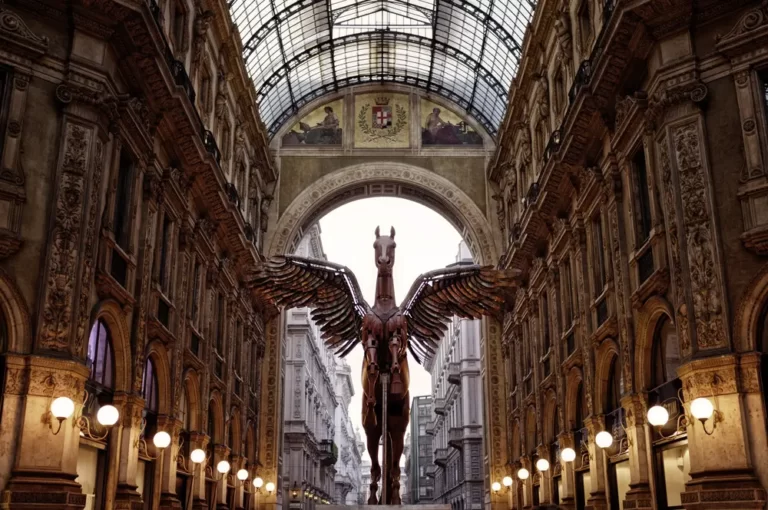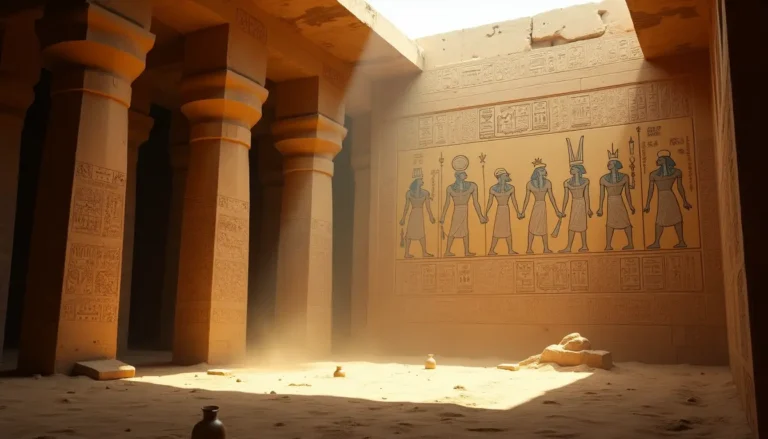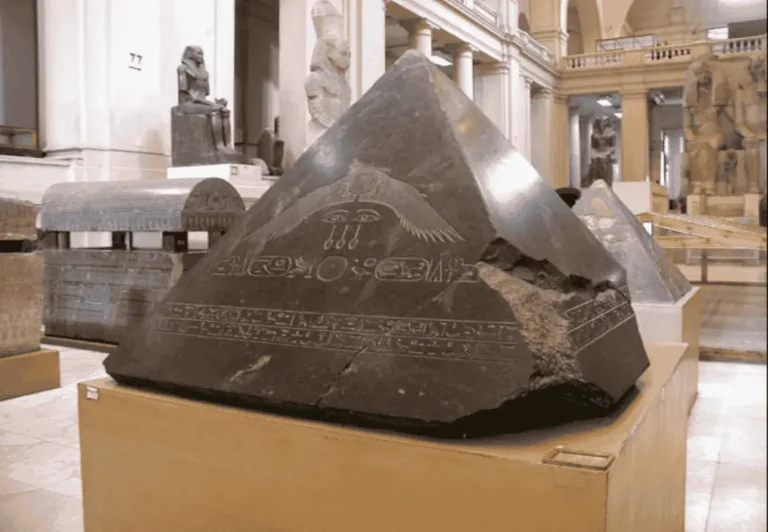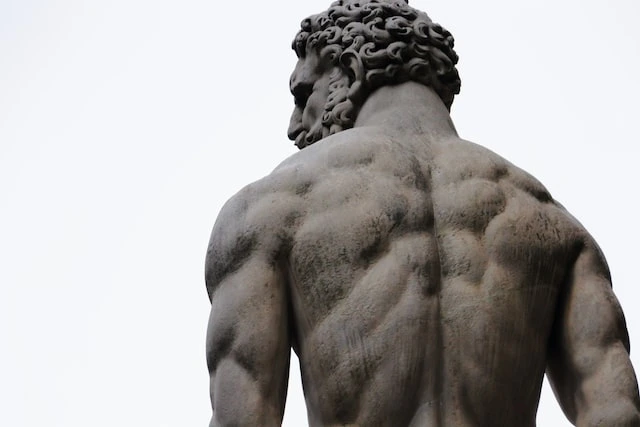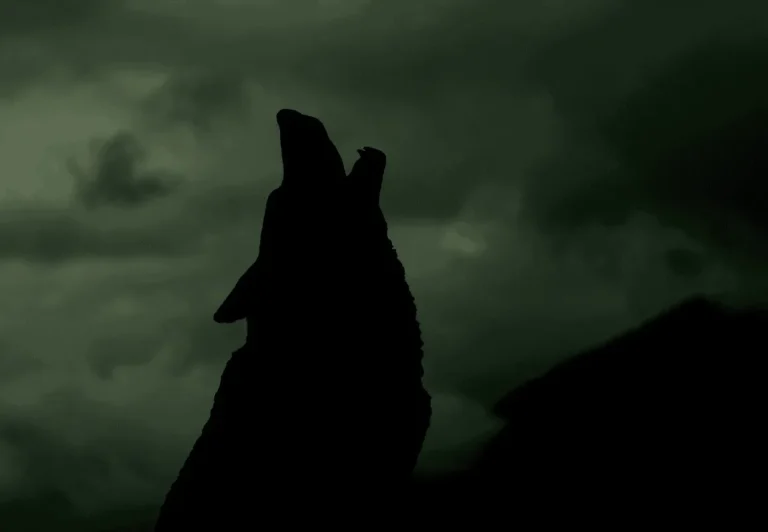Mayan God Kukulcan, the Snake God of the Maya, Remains as a Legacy of the Once-Powerful Civilization

The Maya civilization flourished in Central America for over 2,000 years. It left behind a rich cultural legacy that continues to fascinate people today. One of the most intriguing aspects of Maya culture is their intricate religious beliefs and practices. It centred around a pantheon of deities with complex personalities and attributes. One figure is significant among these gods and goddesses: the mayan god Kukulcan.
Kukulcan is also known as Quetzalcoatl to the Aztecs. He was a powerful deity, representing many aspects of Maya life and culture. As his name suggests, he was often depicted as a serpent, with a long coiled body and a fearsome head that inspired awe and reverence. But Kukulcan was more than just a snake god. He was also associated with the wind, the rain, the sky, and other natural forces that shaped the world around the Maya.
According to Maya mythology, Kukulcan was one of their pantheon’s most potent and benevolent gods. He was believed to have been responsible for many of the achievements of the Maya civilization that include:
- Creation of the world
- Establishment of cities and agriculture
- Invention of the calendar and writing
- Teaching the Maya essential skills, such as astronomy, mathematics, and medicine
Despite his importance, Kukulcan was only sometimes the focus of Maya religious worship. He remained a prominent figure in Maya mythology and art, inspiring awe and wonder in those who encountered him.
Those with an interest in studying lost civilizations, recovered historical artifacts, and significant archaeological sites are encouraged to peruse our latest articles on the subject.
- Uruk, First City of the Ancient World
- The Fabled city, Gold Cibola
- The Long-lost Tomb of Santa Claus
- The Enigmatic City of Meroe
Where is mayan civilization located & why did maya civilization collapse?
Whether you’re a history buff, a spiritual seeker, or simply someone who appreciates the beauty and mystery of ancient cultures, Kukulcan is a fascinating figure who is sure to capture your imagination.
So join us as we explore the mythology, art, and symbolism of the Maya snake god and discover the secrets of this once-powerful civilization.
The Origins and Significance of Kukulcan in Maya Culture

The origins of Kukulcan, the Maya Snake God, are shrouded in mystery. Yet scholars believe he was likely a composite of several different deities worshipped by different Maya groups over time. His name is a combination of two words: “kuk,” which means “feather” or “plumed,” and “ulcan,” which means “snake.” This name reflects Kukulcan’s dual nature as a god of the sky (represented by the feathers) and a god of the earth (represented by the snake).
Kukulcan’s origins can be traced back to the pre-classic period of the Maya civilization. It began around 2000 BCE. Many Maya communities worshipped a serpent deity associated with rain and fertility during this time. As the Maya civilization evolved, this serpent god became associated with other aspects of Maya life, such as astronomy and rulership. By the classic period (250-900 CE), Kukulcan had emerged as a significant deity in the Maya pantheon. It was closely associated with Chichen Itza in present-day Mexico.
One of the reasons for Kukulcan’s significance in Maya culture was his association with rulership power. The Maya believed that their rulers were descendants of the gods. So it was important for rulers to have the support of the gods to maintain their power and legitimacy. Many rulers claimed to be his earthly representatives. Kukulcan was often depicted in art and architecture as a symbol of royal power.
Another reason for Kukulcan’s importance was his association with natural phenomena such as the wind, the rain, and the seasons. The Maya were an agricultural society, so they relied heavily on the cycles of nature to provide food and sustenance. Kukulcan was seen as a benevolent force that could bring rain and fertility to the land. So he was worshipped and propitiated by farmers and other ordinary people.
The Worship of mayan god Kukulcan: Rituals and Ceremonies

Kukulcan was a central figure in the religious beliefs of the Maya civilization. His worship was accompanied by various rituals and ceremonies meant to appease and honor him.
One of the most critical ways Kukulcan was worshipped was through offerings and sacrifices. The Maya believed that blood was a sacred substance necessary to maintain the universe’s balance. They often offered blood sacrifices to their gods. In the case of Kukulcan, these sacrifices were usually animals such as snakes, birds, or deer. In some cases, however, human sacrifices were also made, particularly during times of great crisis or political upheaval.
Another critical aspect of Kukulcan worship was astronomy. The Maya have accomplished astronomers. They believed that the movements of the planets and stars were closely tied to the actions of their gods. Kukulcan was often associated with the planet Venus, which the Maya called “Chaac ek” or “the great star.” The appearance and disappearance of Venus in the sky were seen as significant events. It marked the beginning or end of critical periods in the Maya calendar. On these occasions, the Maya would hold elaborate ceremonies and festivals to honor Kukulcan and ensure his continued favor.
Temples and other sacred sites were also an essential part of Kukulcan worship. The most famous is the pyramid of Kukulcan at Chichen Itza, a marvel of engineering and astronomical precision. This pyramid is also known as El Castillo. It has 365 steps, representing the number of days in the solar year, and is aligned with the sun’s and stars’ movements. Other important sites include the Temple of the Warriors and the Great Ballcourt. It is also associated with Kukulcan worship.
The Impact of Kukulcan on Maya Art and Architecture
Kukulcan, the Maya Snake God, impacted the art and architecture of the Maya civilization. In Maya culture, Kukulcan was often depicted as a powerful and symbolic feathered serpent. His representation can be found in various forms of Maya art, such as carvings, sculptures, murals, and pottery.
Kukulcan’s influence can be seen in some of the most impressive structures of the Maya world, such as the Pyramid of Kukulcan in Chichen Itza. This massive pyramid was built in honor of the Snake God. He featured a unique design incorporating advanced astronomical and architectural knowledge. The pyramid has 365 steps, one for each day of the solar year. It is aligned with the equinoxes, where the light and shadow cast on the pyramid create the illusion of a serpent crawling down the steps. The pyramid is a remarkable feat of engineering and a testament to the Mayans’ spiritual and cosmological beliefs.
In addition to architecture, Kukulcan’s representation can be found in Maya art. It reflects the deity’s importance in their culture. Kukulcan’s hybrid form, combining a serpent and a bird, is often depicted in Maya pottery and sculptures. It represent the union of the earthly and divine realms. The feathered serpent can be seen in various murals and carvings in important buildings, such as the Temple of the Warriors in Chichen Itza and the Palace at Palenque.
Kukulcan’s legacy is still evident today. The imagery and symbolism of the feathered serpent can be found in various contemporary art and culture in Mexico and Central America. The Snake God’s impact on Maya art and architecture is a testament to the enduring legacy of the once-powerful Maya civilization.
Kukulcan’s Decline and Resurgence in Modern-Day Culture

Despite Kukulcan’s importance in Maya culture, his worship declined with the arrival of the Spanish conquistadors in the 16th century. The Spanish saw the worship of Kukulcan as a pagan practice and sought to suppress it. Many temples and structures dedicated to the Snake God were destroyed. The practice of his worship was forced underground.
Yet, Kukulcan’s legacy persisted. In the modern day, interest in the deity has been resent. The Snake God has become an icon of Mexican and Central American culture. His imagery can be found in various contemporary art forms, such as paintings, sculptures, and street art. Kukulcan has also been referenced in popular culture, such as movies and video games, further cementing his place in modern society.
In conclusion, Kukulcan’s decline during the Spanish conquest did not mean the end of his legacy. His significance in Maya culture has endured and has even experienced a resurgence in modern-day society. Kukulcan’s mythology, symbolism, and influence in art and architecture continue to captivate and inspire people worldwide, making him a timeless figure in human history.

